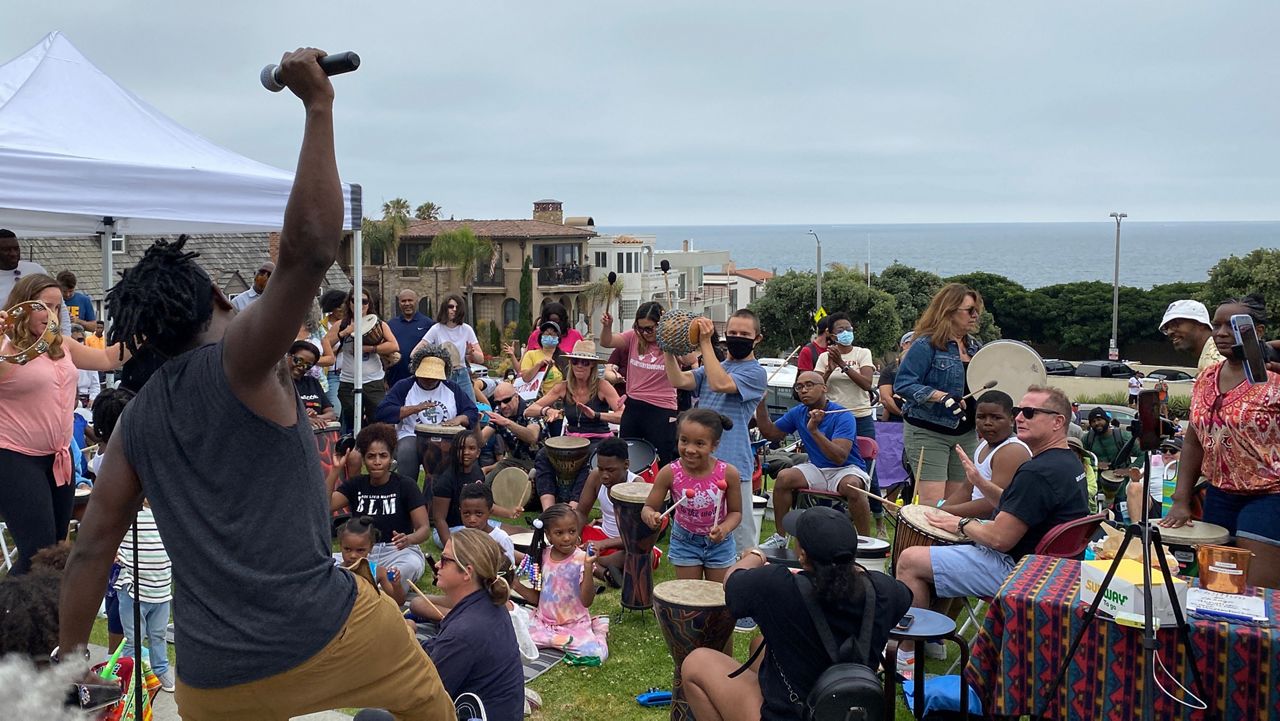MANHATTAN BEACH, Calif. — On June 19, 2020, nearly two dozen activists got together at Bruce’s Beach park in Manhattan Beach, discussing the complicated past of the land they stood on, and determining a path forward.
One year later, Bruce’s Beach was the site of a celebration of food, music, dancing and poetry, estimated to be over 400 people strong. On Juneteenth 2021, the community came together to celebrate the pending return of the Bruce family’s land to their family’s descendants by way of Los Angeles County and California Senate Bill 796, which will make the land transfer possible.
Pride radiated from Kavon Ward of Justice for Bruce’s Beach, the community organization that’s led the push for the Bruce family to receive recompense for the loss of their land nearly 100 years ago.
“We have accomplished so much within the last year, so it made sense to have a celebration to commemorate our one-year anniversary of the work, and then to celebrate Black people, Black community, Black music and Black power — the power it took for us to make this happen,” Ward said. “Today is a celebration. It’s also a call to action. Folks need to make sure that they’re doing what they need to do so the Assembly votes yes on this bill, and so it’s passed and signed into law.”
More than a century ago, Willa and Charles Bruce founded Bruce’s Lodge, a Black-friendly beach resort in the young city of Manhattan Beach. Their success led to a growing community of Black residents and businesses — which didn’t sit well with the white residents of the city. Harassment followed, from private citizens and local government.
During the 1920s, the city trustees of Manhattan Beach used eminent domain to condemn two blocks of the city (including land owned and improved upon by five Black families), ostensibly to build a park. A park wouldn’t open on the land until the 1950s.
Last year, Justice for Bruce’s Beach became a fixture in Manhattan Beach politics before breaking into the public consciousness. The land’s history eventually made its way to LA County Supervisor Janice Hahn, who learned that the two lots that once comprised Bruce’s Lodge were now owned by the county.
“I will tell you, without hesitation, I said that there’s only one thing to do,” Hahn told the Juneteenth crowd. “We’ve got to give the property back to the remanding descendants of the Bruce's, to begin to right that wrong.”
In doing so, Hahn believes that LA County would be the first governmental body in America to return taken land to an African American family.
"And we’re going to show that the sky’s not going to fall down if we right a wrong," Hahn added. "We are going to show the world that this is how you do it."
State Sen. Steven Bradford, author of SB 796 and member of the state’s Reparations Task Force, declared that this is just an example of what reparations can look like in California.
"People say, 'We can’t afford reparations.' It doesn’t necessarily have to be money. It could be free education at our UCs and our CSUs, it could be free health care, just like we give our military who have served this country, or assistance for first-time home buyers," Bradford said. "There are many ways we can right the wrong of over 200 years of oppression — really, 400 years of oppression — of African American people in this country."
The day’s celebrations included food trucks, music and plenty of photos — many of which were taken by the monument overlooking the park, just off of Highland Avenue.
John Furgerson and Jason Cooley were among the folks who had stopped by the monument as they took in the celebration.
"It’s a beautiful thing, it’s a good thing for people of color to all come together," Cooley said. "But I feel like it's more for non-people of color to look at it and see what it represents."
The pandemic, he explained, put a microscope on racial inequities in the U.S., showing people that the metaphorical playing field has long been uneven for people of color.
“We just want what everybody else wants, and what everybody else has... How is it that people see us as not deserving it?”



